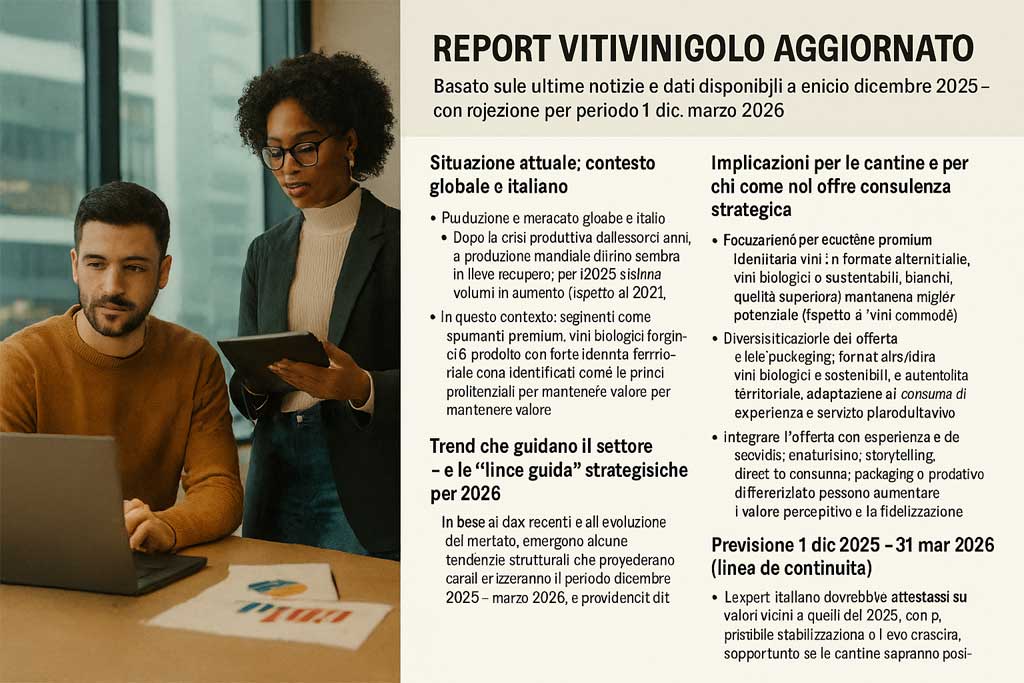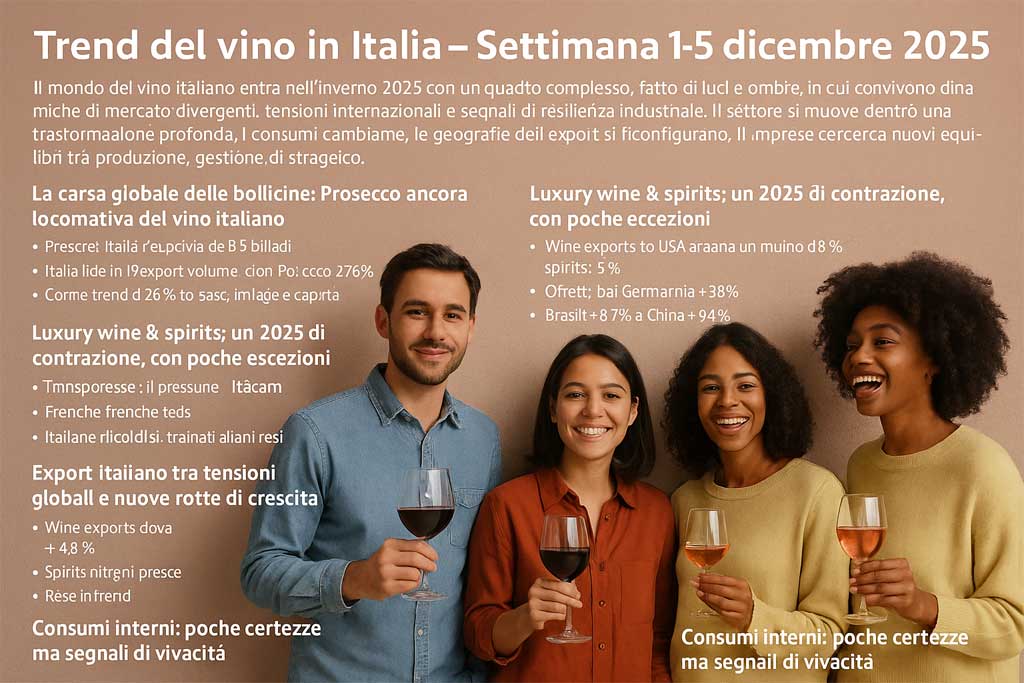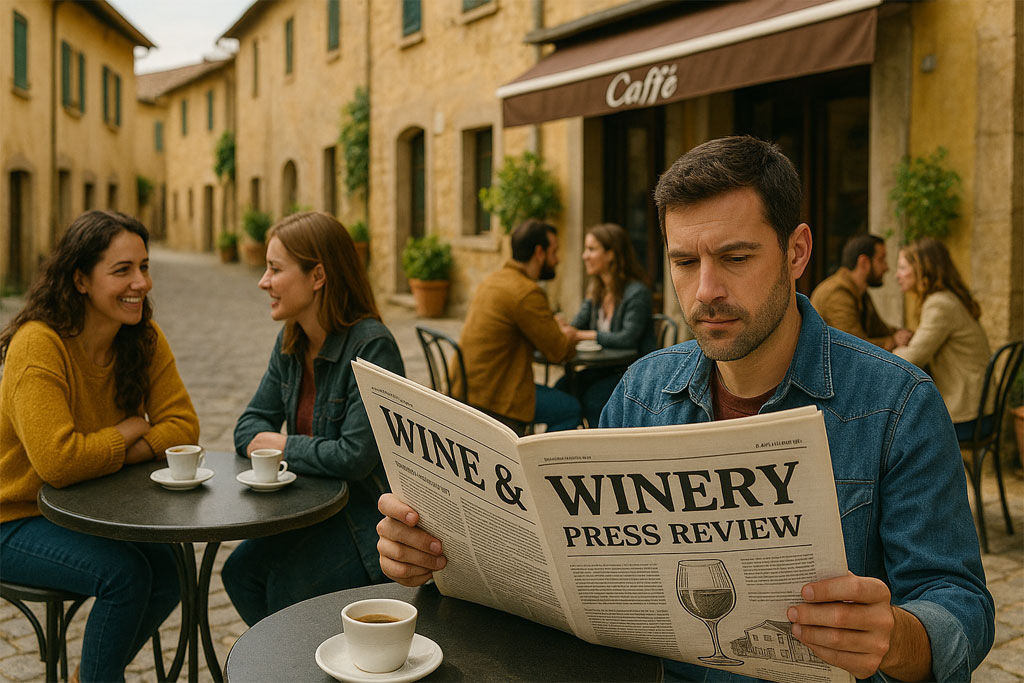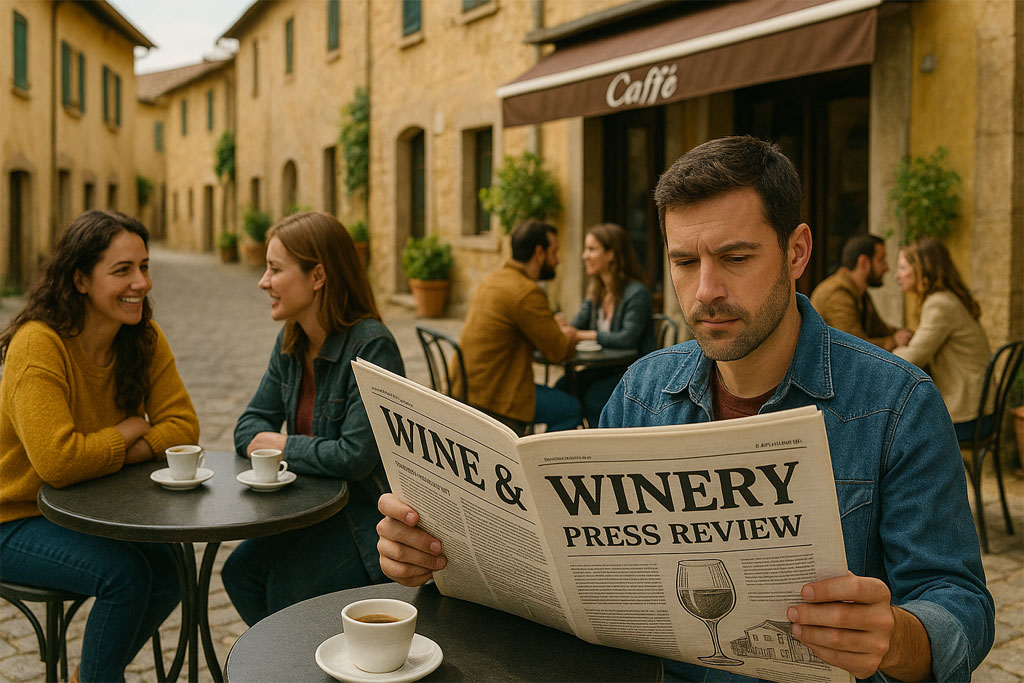Based on the latest news and data available as of early December 2025 — with projections for the period December 1, 2025 – March 31, 2026.
Current situation: global and Italian context.
Production and global market
- After the production crisis of recent years, global wine production appears to be recovering slightly: volumes are estimated to increase in 2025 compared to 2024, although remaining below the five-year average.
- However, global demand continues to show fragility: inflation, economic uncertainty and changes in consumption (greater attention to health and lifestyle) are compressing both volumes and spending on wine.
- In this context, segments such as premium sparkling wines, organic wines, or products with a strong territorial identity are identified as the main opportunities for maintaining value and margins.
Scenario for Italy
- Italy confirms its world leadership in export volumes, with estimates of approximately 22 million hectoliters exported by 2025.
- The value of exports remains high: it is estimated to be around 8.1–8.2 billion euros in 2025.
- Despite this, exports showed signs of weakness in 2025: data updated in July indicate a decline of -0.9% in value and -3.4% in volume compared to the same period of the previous year.
- At the same time, domestic consumption continues to be weak and in slow but steady decline compared to previous generations, reflecting a change in consumption styles and a less frequent “everyday” wine consumption.
Trends driving the industry – and strategic “guidelines” for 2026
Based on recent data and market evolution, some structural trends emerge that I expect will characterize the period December 2025 – March 2026, and probably beyond:
- Premiumization and valorization of territorial identity : wines with a strong identity (DOC/DOCG, sparkling wines, white wines, superior quality) maintain better potential than “commodity wines”. In particular, sparkling wines and white wines seem to better capture new preferences.
- Diversification of offerings and packaging : alternative formats, organic or sustainable wines, and a greater focus on sustainability and perceived value (not just “quantity,” but experience, quality, and storytelling) as a competitive lever.
- Market polarization and the need to reduce dependence on a few large buyers/areas : as highlighted by overall agri-food exports, geographic concentration (a few countries absorb the majority of Italian wine) remains a vulnerability.
- Adapting to changing consumer trends : consumers today increasingly seek authenticity, sustainability, and territorial authenticity; “everyday” wine is losing ground, while demand for wine as an experience, a story, and a lifestyle grows.
Implications for wineries and for those of us who offer strategic consultancy
For a winery or for a valorization / acquisition / sale operation, these dynamics suggest:
- Focus on premium and identity labels : in a market with abundant supply and selective demand, differential value weighs more than volume.
- Consider geographical diversification of exports : focus not only on traditional large markets but also explore less saturated countries or niches, reducing the risk of dependence on a few markets.
- Promote sustainability, transparency, and brand history : the modern consumer seeks authenticity and perceived value, not just low price.
- Integrate the offering with experience and services : wine tourism, storytelling, direct-to-consumer, packaging and differentiated products can increase perceived value and loyalty.
- Carefully manage inventory, stock, and cash flow : 2025 has shown that production is okay, but the market is selective — rigorous financial and commercial planning will be a competitive advantage.
Forecast 1 December 2025 – 31 March 2026 (continuity line)
- Italian exports are expected to remain close to 2025 levels, with potential stabilization or slight growth, especially if wineries successfully position themselves on quality and identity.
- The “mainstream low-price” segment will come under further pressure — opportunities for consolidation, batch selection, and production rationalization.
- Premium, organic, territorial/sparkling/labels with strong storytelling niches will likely gain relative weight, both in international markets and in the developed domestic market.
- For those who own wineries or plan mergers and acquisitions, this will be a critical time to select quality assets, enhance brands and reputations, and prepare the ground for a more robust recovery when (or if) the global economy returns to stimulate consumption.





